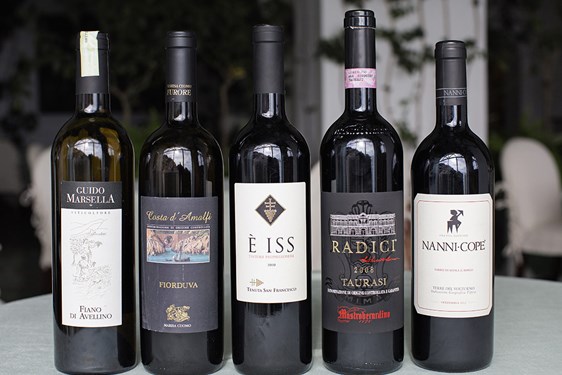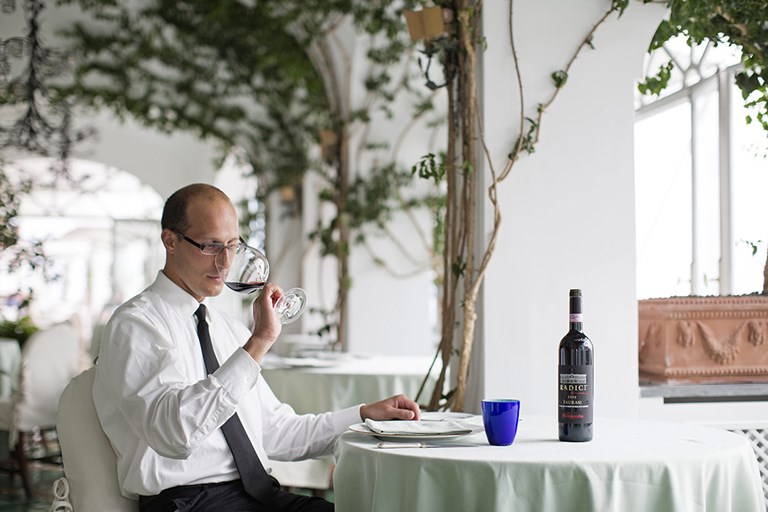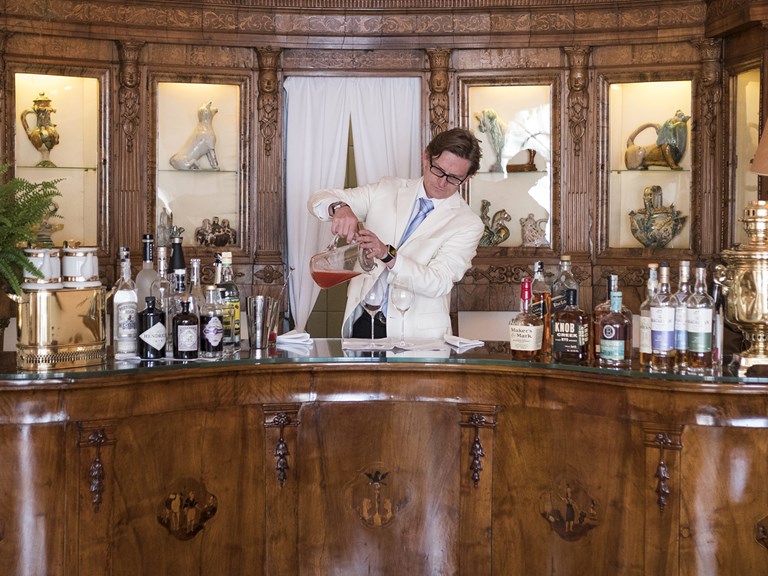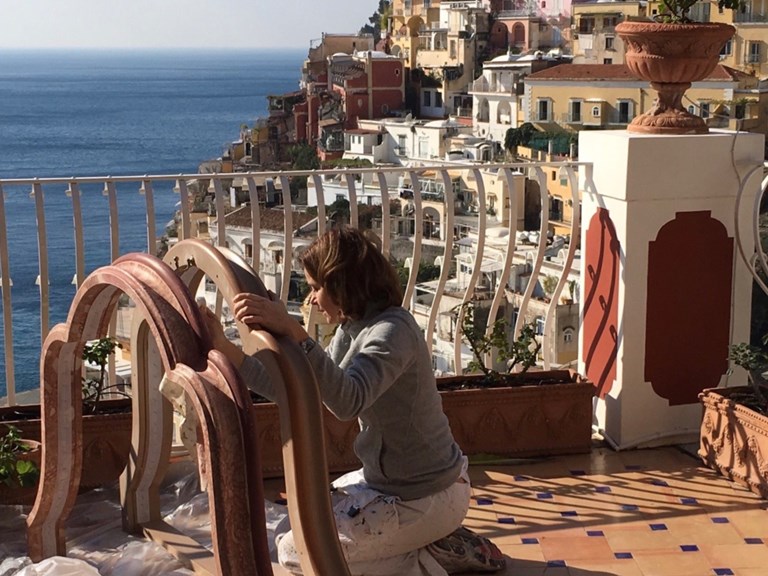THE WINES OF CAMPANIA
06.02.2017 LE SIRENUSE
Journal: How do Campanian wines rate against those from other Italian regions?
Cristian: Their reputation is growing all the time, and rightly so. We’re not yet up there with regions like Tuscany or Piedmont, but we started late, and until recently we had less contact with the international market. However, Campanian wines are international in origin. Vines came from across the Mediterranean, from North Africa, Greece – it’s no accident that one of our most famous white grape varieties is called Greco. This was the first part of Italy where vines were planted, and it also has Italy’s first DOC (registered origin wine): Falerno, which was one of the favourite wines of the Ancient Romans. The potential of the wines from this region is huge. One thing that really works in our favour is that we’ve managed to maintain our native grape varieties to a large extent and not give in to the temptation, which was strong in Italy especially around the 1990s, of planting international varieties like Chardonnay or Cabernet Sauvignon. And there’s an increasing demand, today, for native, autochthonous varieties that reflect an area’s terroir.
Journal: Is there a demand among guests of Le Sirenuse for local wines?
Cristian: Oh yes, a lot of people ask me specifically for wines from the region. It’s a little more difficult for me to position the reds, as there’s such strong competition from the Chiantis and Brunellos and Barolos, but Campanian whites go down very well.
Journal: Traditionally some of the best Campanian wines derive from inland areas like the provinces of Avellino and Benevento. But isn’t it true that recently some of the islands and coastal regions have come on apace – including the Costiera Amalfitana itself?
Cristian: Absolutely. If Campania was a late developer, the Costiera was late even by Campanian standards. But one of the fascinating things about viticulture here is that there are still some pre-phylloxera vines that survived because the volcanic soil resisted the virus [the devastating phylloxera virus which decimated the European wine industry at the end of the nineteenth century]. However most of the wine here was produced on a very small scale by families, to be consumed by them and their friends and relatives, or sold sfuso [from vats into bottles, demijohns or buckets that customers bring to the winery]. So we have deep winemaking history here, even though the commercial production of quality wines is relatively recent. The vineyards spread out over a series of steep terraces, so it’s very labour-intensive. The height differential between the lowest and highest vines that need to be tended or harvested can be as much as 500 or 600 metres [up to 2,000 feet]. And everything is done by hand. There’s a lot of legwork involved, and a lot of exposure to the elements – we call it ‘heroic winemaking’!
Journal: Does that height difference mean that the area lends itself to single vineyard crus, where they separate the grapes from, say, the lowest and highest plots?
Cristian: The problem is that we’re often talking about really tiny plots. But one or two producers are starting to do this: for example Tenuta San Francesco in Tramonti has a white cru called Per Eva that is made from their highest vineyard, with the best aspect and the most favourable diurnal temperature range. Traditionally, though, most wines made on the Costiera have been blends of different varieties. They even used to plant them all mixed in: Falanghina, Peppella, Ginestra, Tintore, Aglianico... sometimes even with whites and reds all together in the same small plot!
Journal: What are some of the more interesting native varieties found on the Amalfi Coast?
Cristian. Among the red varieties, I’d say Tintore. And Peppella from among the whites. But nobody so far, to my knowledge, is bottling a 100% Peppella, and there are very few varietal Tintore bottlings. Most of our most famous Costiera wines are blends of native varieties – like Marisa Cuomo’s Fiorduva, which mixes three white grapes, Fenile, Ripoli and Ginestra. Fenile is related to Falanghina and Ripolo to Biancolella, two varieties that are widely planted elsewhere in Campania. They pick the grapes quite late for Fiorduva, which makes the wine more aromatic and gives it a slightly higher residual sugar level. But it’s very well balanced, very mineral. One of the things that has encouraged the development of quality wines like this on the Costiera is that there’s a receptive local market, thanks to the area’s reputation as a high-end tourism destination. Seventy per cent of wines from the Costiera are sold and consumed on the Costiera. Only a small fraction is exported, most of it to the US and Japan.

View
The Sirenuse Journal then asked Cristian to nominate five of the best Campanian producers, five starting points for wine enthusiasts looking to explore the region’s ever-evolving scene. Here are his selections:
Marisa Cuomo
“Because she’s the producer who first put the Costiera Amalfitana on the international wine map, winning several awards, especially for her top-of-the-range white, Fiorduva – in 2006 the Italian sommelier association named it White Wine of the Year”. Wine to try: Furore Bianco Fiorduva (white).
Tenuta San Francesco
“Because their wines are such faithful reflections of the territory, reflecting local winemaking traditions – but with an eye to quality as well”. Wine to try: È Iss (red).
Guido Marsella
“Because his is the purest expression of one of the great Campanian white wines, Fiano di Avellino”. Wine to try: Fiano di Avellino (white).
Mastroberardino
“Because they’re at the origin of the great qualitative leap of Campanian wines – and because their ‘Radici’ Taurasi is still the most elegant version, for me, of that great red wine, made from Aglianico grapes.” Wine to try: Radici Taurasi (red).
Nanni Copé
“Because he’s one of a new wave of producers who are committed to using native varieties, and because the one wine he makes, in tiny quantities, Sabbie di Sopra il Bosco, is a wonderful meeting between the rusticity and the aromatic elegance of the Pallegrello Nero grape; it’s a really interesting wine”. Wine to try: Sabbie di Sopra il Bosco (red).
Guests of Le Sirenuse can book a private or group tasting session with Cristian via the concierge.
Photos © Roberto Salomone
Le Sirenuse Newsletter
Stay up to date
Sign up to our newsletter for regular updates on Amalfi Coast stories, events, recipes and glorious sunsets


